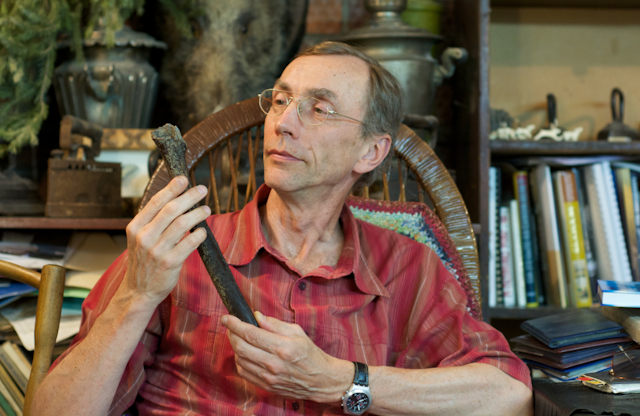When a human bone was found on a gravelly riverbank by a bone-carver who was searching for mammoth ivory, little did he know it would provide the oldest modern-human genome yet sequenced. The anatomically modern male thigh-bone, found near the town of Ust’-Ishim in south-western Siberia, has been radiocarbon-dated to around 45,000 years old.
This was an interesting time in human prehistory. Although within the most-recent ice age, it was a relatively warm period, sometimes proposed as the point at which modern humans entered Europe. It is also when the artefacts left by many modern humans start to develop from tools similar to those used by older human species to more sophisticated ones. At the same time, we see appearance of evidence for fishing, trade, music and art.
Isotope analysis suggests that Ust’-Ishim man’s diet included fish, and he was discovered not far from the Kara-Bom site, at which such artefacts have been found. So it seems likely that these were the kinds of objects he used.
How humans colonised the Earth
The story of modern humans starts much earlier, around 200,000 years ago, in Africa. By about 50,000 years ago, the Middle East had been colonised, and from there, other areas of Eurasia.
The reality is that the spread of humanity was complex, with millions of individuals moving, reproducing and generally getting on with life. But simple models that group people into populations can give useful approximations of the truth. One well-supported model has one population, the “beachcombers”, migrating east along the south Asian coast and eventually populating Australia and another group migrating north inland later and then spreading both east and west to provide the majority of ancestry for the people of Eurasia.
To see where the Ust’-Ishim man fits into to this picture, his DNA sequence was compared to that of many modern and ancient individuals, and mutations used to suggest how they are related to each other.
Mutations are the random changes that happen in all DNA sequences over time. While some have significant consequences, most don’t. They are passed down to descendants and, when detected in sequence data, they can be used to build a family tree of sorts. If two individuals share a mutation, they must be descended from the same ancestor.
Ust’-Ishim man has many mutations that are common across most of the world, but not in Africa. This isn’t surprising. Like the inhabitants of those places, he descended from the pioneering group that moved from Africa to the Middle East – and any mutations that happened within that population had a good chance of being carried around the world.
What is more interesting is that he does not carry many of the mutations that characterise any proposed migration since then, neither the beachcombers nor inlanders, Asian or European. This suggests that he was part of a different northward migration from the Middle East than the one that populated these continents. Maybe his people died out before or during the later influx – or maybe they were just outnumbered and absorbed.
Meeting the Neanderthals
Another interesting part of this story is that, when modern humans arrived, Eurasia was already inhabited. As they spread they came across archaic humans, descendants of earlier out-of-Africa migrations. These included the Neanderthals, Denisovans and Homo erectus – and none of them survived the meeting.
However, it has become increasingly clear that this is not the whole story. Previous sequencing projects have shown that all today’s non-Africans have interbreeding with Neanderthals to thank for 1.5-2% of their DNA. And indeed, the famous bones found at Skhul and Qafzeh in Israel-Palestine appear to have a mixture of modern and Neanderthal traits and have been proposed as hybrids. However, whether they contributed to today’s gene-pool or died out is unknown.
With the help of new tools, Svante Pääbo at the Max Planck Institute for Evolutionary Anthropology in Germany has developed ways to sequence DNA obtained from ancient bones. This is no easy feat because DNA, just like other carbon-containing compounds, degrades on its own as time passes by. However, Pääbo was able to recover enough from the bone to run comparative tests.
He and his colleagues, in a study published in the journal Nature, found that Ust’-Ishim man has a similar proportion of Neanderthal ancestry to today’s non-African. It was contributed 7,000 to 13,000 years before Ust’-Ishim man lived (about 50,000 to 60,000 ago). This is much later than the Skhul-Qafzeh people, making them an unlikely ancestor.
However, it is difficult to be sure whether Ust’-Ishim man’s forebears account for Neanderthal ancestry of people today. The dating of this hybridisation to so near most proposed dates for the colonisation of the Middle East suggests that it might well be at least part of the explanation.

